- Home
- H. P. Lovecraft
The Call of Cthulhu and Other Weird Stories
The Call of Cthulhu and Other Weird Stories Read online
PENGUIN TWENTIETH-CENTURY CLASSICS
THE CALL OF CTHULHU AND OTHER WEIRD STORIES
H. P. Lovecraft was born in 1890 in Providence, Rhode Island, where he lived most of his life. Frequent illnesses in his youth disrupted his schooling, but Lovecraft gained a wide knowledge of many subjects through independent reading and study. He wrote many essays and poems early in his career, but gradually focused on the writing of horror stories, after the advent in 1923 of the pulp magazine Weird Tales, to which he contributed most of his fiction. His relatively small corpus of fiction—three short novels and about sixty short stories—has nevertheless exercised a wide influence on subsequent work in the field, and he is regarded as the leading twentieth-century American author of supernatural fiction. H. P. Lovecraft died in Providence in 1937.
S. T. Joshi is a freelance writer and editor. He has edited Lovecraft’s collected fiction as well as some of Lovecraft’s essays, letters, and miscellaneous writings. Among his critical and biographical studies are The Weird Tale (1990), Lord Dunsany: Master of the Anglo-Irish Imagination (1995), and H. P. Lovecraft: A Life (1996). He has also edited Documents of American Prejudice (1999). He lives in New York City.
PENGUIN BOOKS
An imprint of Penguin Random House LLC
penguinrandomhouse.com
First published in Penguin Books 1999
Selection, introduction, and notes copyright © S. T. Joshi, 1999
All rights reserved
The stories in this volume are reprinted by arrangement with Lovecraft Properties LLC.
LIBRARY OF CONGRESS CATALOGING IN PUBLICATION DATA
Lovecraft, H. P. (Howard Phillips), 1890-1937.
The call of Cthulhu and other stories / H.P Lovecraft; edited
with an introduction and notes by S. T. Joshi.
p. cm.—(Penguin twentieth-century classics)
eISBN: 978-1-101-10011-0
1. Horror tales, American. I. Joshi, S. T., 1958- .
II. Title. III. Series.
PS3523.0833A6 1999
813’.52—dc21 99-19100
btb_ppg_c0_r3
Contents
Title Page
Copyright Page
Introduction
Acknowledgements
Dagon
The Statement of Randolph Carter
Facts Concerning the Late Arthur Jermyn and His Family
Celephaïs
Nyarlathotep
The Picture in the House
The Outsider
Herbert West—Reanimator
The Hound
The Rats in the Walls
The Festival
He
Cool Air
The Call of Cthulhu
The Colour Out of Space
The Whisperer in Darkness
The Shadow Over Innsmouth
The Haunter of the Dark
EXPLANATORY NOTES
INTRODUCTION
Howard Phillips Lovecraft was born on August 20, 1890, at his family home at 454 Angell Street in Providence, Rhode Island. His mother, Sarah Susan Phillips Lovecraft, could trace her ancestry to the seventeenth century, while his father, Winfield Scott Lovecraft, a traveling salesman for Gorham & Company, Silversmiths, of Providence, derived from a line originating in Devonshire, England, and domiciled in New York State since the early nineteenth century. When Lovecraft was three his father suffered a mental breakdown and was placed in Butler Hospital in Providence, where he remained for five years before dying on July 19, 1898. Lovecraft was apparently told that his father was paralyzed and comatose during this period, but the surviving medical evidence makes it clear that Winfield died of syphilis.
With the death of Lovecraft’s father, the upbringing of the boy fell to his mother, his two aunts, and especially his maternal grandfather, the prominent industrialist Whipple Van Buren Phillips. Lovecraft was a precocious youth: he was reciting poetry at the age of two, reading by three, and writing by six or seven. His earliest enthusiasm was for Grimm’s fairy tales and the Arabian Nights, which he read by the age of five; it was at this time that he adopted the pseudonym of “Abdul Alhazred,” who later became the author of the mythical Necronomicon. The next year, however, his Arabian interests were eclipsed by the discovery of Greek mythology, gleaned through Bulfinch’s Age of Fable and Hawthorne’s Wonder Book and Tanglewood Tales. His earliest surviving literary work, “The Poem of Ulysses” (1897), is a paraphrase of the Odyssey in 88 lines of internally rhyming verse. But Lovecraft had by this time already dabbled in weird fiction, and his first story, “The Noble Eavesdropper” (non-extant), may date to as early as 1896. His interest in the weird was fostered by his grandfather Phillips, who entertained Lovecraft with oral weird tales in the Gothic mode; but it was his ecstatic discovery of Edgar Allan Poe in 1898 that put the seal on the matter: “. . . at the age of eight I saw the blue firmanent of Argos and Sicily darkened by the miasmal exhalations of the tomb!” (SL II.109).
As a boy Lovecraft was somewhat lonely and suffered from frequent illnesses, many apparently psychological. His attendance at the Slater Avenue School was sporadic, but Lovecraft was absorbing much information through independent reading and study. At the age of eight he discovered science, first chemistry, then astronomy. He began to produce hectographed journals, The Scientific Gazette (1899-1907) and The Rhode Island Journal of Astronomy (1903-07), for distribution among his friends and family. When he entered Hope Street High School in 1904, he found his teachers and his peers congenial and encouraging, and he developed a number of long-lasting friendships with boys of his own age. Lovecraft’s first appearance in print occurred in 1906, when he wrote a letter to the editor of the Providence Sunday Journal, on a point of astronomy. Shortly thereafter he began writing astronomical columns for both the Pawtuxet Valley Gleaner, a rural paper, and the Providence Tribune (1906- 08). Later he wrote such columns for the Providence Evening News (1914-18) and the Asheville [N.C.] Gazette-News (1915).
In 1904, the death of Lovecraft’s grandfather Phillips and the subsequent mismanagement of his property and assets plunged Lovecraft’s family into severe financial difficulties. Lovecraft and his mother were forced to move out of their lavish Victorian home into cramped quarters at 598 Angell Street. Lovecraft was devastated by the loss of his birthplace and apparently even contemplated suicide, taking long bicycle rides and looking wistfully at the watery depths of the Barrington River. But the thrill of learning banished these thoughts. However, in 1908, after having finished only three years of high school (he had been absent for nearly the whole of the 1905-06 term), he suffered a nervous breakdown that compelled him to leave school without a diploma. This event, and his consequent failure to enter Brown University, were sources of great shame to Lovecraft in later years, and he rarely spoke in detail of this critical period of his life. In the absence of evidence, one can only conjecture as to the causes of the breakdown; perhaps his difficulty in mathematics was a factor, since Lovecraft knew that his goal of becoming a professional astronomer hinged on his ability to master higher mathematics.
From 1908 to 1913 Lovecraft was a virtual hermit, doing little save pursuing his astronomical interests, taking some correspondence courses, and writing a little poetry. During this period Lovecraft was also thrown into an unhealthily close relationship with his mother, still suffering from the trauma of her husband’s illness and death, and who developed a pathological love-hate relationship with her so
n.
Lovecraft emerged from his hermitry in a peculiar way. Having taken to reading the early “pulp” magazines of the day, he became so incensed at the insipid love stories of one Fred Jackson in the Argosy that he wrote a letter attacking Jackson. This letter was published in 1913 and evoked a storm of protest from Jackson’s defenders; one of them responded with a brief satirical poem. Lovecraft—whose devotion to the poetry of Dryden and Pope was undying—could not resist making several verse responses of his own in the style of the Dunciad. The controversy lasted for a full year, and was observed by Edward F. Daas, Official Editor of the United Amateur Press Association (UAPA), a group of amateur writers from around the country who wrote and published their own magazines. At Daas’s invitation Lovecraft joined the UAPA in April 1914.
Amateur journalism was just what Lovecraft needed at this juncture. Greatly learned but diffident of his abilities and out of tune with the modern world, Lovecraft found that he could achieve a modicum of recognition and encouragement in the small world of amateur journalism. He published thirteen issues of his own paper, The Conservative (1915-23), as well as contributing poetry and essays voluminously to other journals. He also became President (1917-18) and Official Editor (1920-22, 1924-25) of the UAPA, as well as serving as interim President of the rival National Amateur Press Association (NAPA) in 1922-23. This entire experience may have saved Lovecraft from a life of unproductive reclusiveness; as he himself wrote in 1921: In 1914, when the kindly hand of amateurdom was first extended to me, I was as close to the state of vegetation as any animal well can be . . . With the advent of the United I obtained a renewed will to live; a renewed sense of existence as other than a superfluous weight; and found a sphere in which I could feel that my efforts were not wholly futile. For the first time I could imagine that my clumsy gropings after art were a little more than faint cries lost in the unlistening void. (MW 452)
It was in the amateur world that Lovecraft recommenced the writing of fiction, which he had abandoned in 1908. W. Paul Cook and others, noting the promise shown in such early tales as “The Beast in the Cave” (1905) and “The Alchemist” (1908), urged Lovecraft to pick up his fictional pen again. Lovecraft did so in the summer of 1917, writing “The Tomb” and “Dagon” in rapid succession. Thereafter he kept up a steady if sparse flow of fiction, although until at least 1922 poetry and essays were still his dominant modes of literary expression. Lovecraft also became involved in an ever-increasing network of correspondence with friends and associates, and eventually became one of the greatest and most prolific letter-writers of the century. Gainful employment, however, did not seem to be much of a concern, even though the family inheritance was inexorably dwindling. Never trained for an occupation, Lovecraft eventually drifted into poorly paying work as a “revisionist” or ghostwriter.
Lovecraft’s mother, her mental and physical condition deteriorating, suffered a nervous breakdown in 1919 and was admitted to Butler Hospital. However, her death on May 24, 1921, was the result of a bungled gallbladder operation. Lovecraft was shattered by the loss, but by July had recovered enough to attend an amateur journalism convention in Boston. It was on this occasion that he first met the woman who would become his wife. Sonia Haft Greene was a widowed Russian Jew seven years Lovecraft’s senior, but the two seemed, at least initially, to find themselves highly congenial. Lovecraft visited Sonia in her Brooklyn apartment on two separate occasions in 1922, and the news of their marriage on March 3, 1924, was not entirely a surprise to their friends; but it may have been to Lovecraft’s two aunts, Lillian D. Clark and Annie E. Phillips Gamwell, who were notified only by letter after the ceremony had taken place.
Lovecraft moved into Sonia’s apartment in Brooklyn, and initial prospects for the couple seemed good: Lovecraft had gained a foothold by the acceptance of several of his early stories by Weird Tales, the celebrated pulp magazine founded in 1923; Sonia was an executive at a successful hat shop on Fifth Avenue in Manhattan. But troubles descended upon the couple almost immediately. Sonia gave up her position to start a hat shop of her own, but it was a failure; Lovecraft turned down the chance to edit Weird Tales (which would have necessitated his move to Chicago), and was also unable to find work with New York magazine and book publishers, in spite of assistance from such colleagues as Samuel Loveman (poet and friend of Ambrose Bierce, George Sterling, and Hart Crane) and Harry Houdini, for whom Lovecraft had ghostwritten a story for Weird Tales. Sonia’s health gave way, forcing her to spend time in a sanatarium in New Jersey. Lovecraft attempted to secure work—including positions with such unlikely firms as a collection agency and a lamp-testing company—but was unsuccessful. On January 1, 1925, Sonia went to the Midwest to take up a succession of jobs in Cincinnati and Cleveland, returning to New York only intermittently; Lovecraft moved into a single apartment near the Brooklyn slum known as Red Hook. Although he had many friends in New York—this was the heyday of the Kalem Club, so named because its initial members (including Rheinhart Kleiner, Frank Belknap Long, and Everett McNeil) had surnames beginning with K, L, or M—he became increasingly depressed. Lovecraft, who in his letters and essays expressed prejudice against African Americans, Jews, and other minorities throughout his life, was dismayed by his isolation amidst the masses of “foreigners” in the city. His fiction turned from the nostalgic (“The Shunned House” [1924], set in Providence) to the bleak and misanthropic: “The Horror at Red Hook” and “He,” both written in August 1925, lay bare his feelings about the heterogeneous megalopolis in which he found himself.
Finally, in early 1926, his aunts arranged for Lovecraft to return to the Providence he missed so keenly. But where did Sonia fit into these plans? No one seemed to know, least of all Lovecraft. Although he continued to profess his “appreciation” for her, he seemed to stand idly by while his aunts barred her from coming to Providence or Boston to start a business; their nephew could not be tainted by the stigma of a tradeswoman wife so close to the region of the family’s pseudo-aristocratic lineage. No doubt Lovecraft’s sluggish sexuality was also a factor in the dissolution of the marriage. Sonia undertook an action for divorce in 1929, although Lovecraft never signed the final decree.
When Lovecraft returned to Providence on April 17, 1926, settling at 10 Barnes Street north of Brown University, it was not to bury himself away as he had done in the 1908-13 period; rather, the last ten years of his life were the period of his greatest flowering, both as a writer and as a human being. As W. Paul Cook poignantly wrote in his memoir of Lovecraft, the New York “exile” was in some senses a necessary phase of his maturation: “He had been tried in the fire and came out pure gold.”1 Lovecraft’s subsequent life seemed relatively uneventful: in spite of a perilously meager income, he traveled to various sites around the eastern seaboard (Quebec, New England, Philadelphia, Charleston, St. Augustine, New Orleans), in quest of antiquarian sites to nurture his devotion to the seventeenth and eighteenth centuries; he wrote his greatest fiction, from “The Call of Cthulhu” (1926) to At the Mountains of Madness (1931) to “The Shadow Out of Time” (1934-35); and he continued his prodigiously vast correspondence. He nurtured the careers of many young writers, many of whom he never met (August Derleth, Donald Wandrei, Robert Bloch, Fritz Leiber); he became concerned with political and economic issues, as the Great Depression led him to renounce his earlier conservatism and support Franklin D. Roosevelt’s New Deal; and he continued absorbing knowledge on a wide array of subjects, from philosophy to literature to history to architecture.
However, the last several years of his life were filled with hardship. In 1932 his beloved aunt, Lillian Clark, died, and in 1933 he moved into quarters at 66 College Street, right behind the John Hay Library of Brown University, with his other aunt, Annie E. Phillips Gamwell. (This house has now been moved to 65 Prospect Street.) His later stories, increasingly lengthy and complex, became difficult to sell, and his revision work was bringing in very small sums of money, forcing Lovecra
ft into extreme economies in diet, clothing, and other necessities. In 1936 the suicide of Robert E. Howard, the author of the Conan stories and one of his closest correspondents, left him confused and saddened. By this time the illness that would cause his own death—cancer of the intestine—had already progressed so far that little could be done to treat it. Lovecraft attempted to carry on in increasing pain through the winter of 1936-37, but he was finally compelled to enter Jane Brown Hospital on March 10, 1937, where he died five days later. He was buried on March 18 at the Phillips family plot in Swan Point Cemetery.
It is likely that, as he saw death approaching, Lovecraft envisioned the ultimate oblivion of his work, as he had never had a true book published in his lifetime (aside from the crudely issued The Shadow Over Innsmouth, only a few hundred copies of which were distributed in late 1936), and his stories, essays, and poems were scattered in a wide array of amateur and pulp magazines. Lovecraft, convinced that the production of art was a form of pure “self-expression” in which monetary considerations played no part, refused to tailor his work to the crude formulae of the pulp magazines, and was also markedly reluctant to “peddle” his work to book publishers. But the friendships that Lovecraft had forged solely by correspondence proved to be the seeds of a posthumous triumph. August Derleth and Donald Wandrei were determined to preserve Lovecraft’s stories in the dignity of hardcovers, and they formed the firm of Arkham House initially for the sole purpose of publishing Lovecraft; they issued The Outsider and Others in 1939. Wandrei was also convinced that Lovecraft’s ultimate reputation might rest as much on his letters as on his fiction, and he spent decades editing what would eventually become the five-volume series of Selected Letters. Lovecraft’s work is now widely available, his essays, poetry, and miscellany have been collected, and his tales have been translated into a dozen or more languages. His position as the leading American proponent of supernatural fiction in this century is assured.

 The Best of H.P. Lovecraft
The Best of H.P. Lovecraft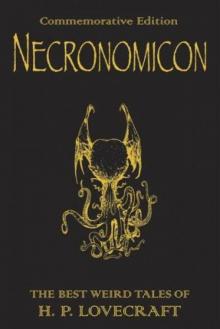 The Definitive H.P. Lovecraft: 67 Tales Of Horror In One Volume
The Definitive H.P. Lovecraft: 67 Tales Of Horror In One Volume The Complete Works of H.P. Lovecraft
The Complete Works of H.P. Lovecraft Other Gods and More Unearthly Tales
Other Gods and More Unearthly Tales Lovecraft's Fiction Volume I, 1905-1925
Lovecraft's Fiction Volume I, 1905-1925 The Shadow Out of Time
The Shadow Out of Time The Shunned House
The Shunned House Lovecraft's Fiction Volume II, 1926-1928
Lovecraft's Fiction Volume II, 1926-1928 The Thing on the Doorstep and Other Weird Stories
The Thing on the Doorstep and Other Weird Stories Dream Cycle of H. P. Lovecraft: Dreams of Terror and Death
Dream Cycle of H. P. Lovecraft: Dreams of Terror and Death Great Tales of Horror
Great Tales of Horror Shadows of Death
Shadows of Death Delphi Complete Works of H. P. Lovecraft (Illustrated)
Delphi Complete Works of H. P. Lovecraft (Illustrated) Waking Up Screaming: Haunting Tales of Terror
Waking Up Screaming: Haunting Tales of Terror H.P. Lovecraft Goes to the Movies
H.P. Lovecraft Goes to the Movies The Road to Madness
The Road to Madness The Complete H.P. Lovecraft Reader (68 Stories)
The Complete H.P. Lovecraft Reader (68 Stories) The Horror in the Museum
The Horror in the Museum Collected Fiction Volume 1 (1905-1925): A Variorum Edition
Collected Fiction Volume 1 (1905-1925): A Variorum Edition Lovecrafts_Fiction, vol.I_1905-1925
Lovecrafts_Fiction, vol.I_1905-1925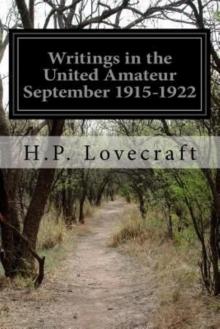 Writings in the United Amateur, 1915-1922
Writings in the United Amateur, 1915-1922 H.P. Lovecraft: The Complete Works
H.P. Lovecraft: The Complete Works Collected Fiction Volume 3 (1931-1936): A Variorum Edition
Collected Fiction Volume 3 (1931-1936): A Variorum Edition H.P. Lovecraft: The Complete Fiction
H.P. Lovecraft: The Complete Fiction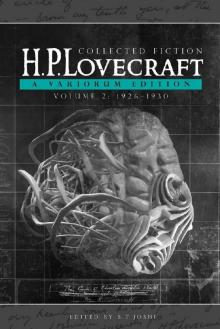 Collected Fiction Volume 2 (1926-1930): A Variorum Edition
Collected Fiction Volume 2 (1926-1930): A Variorum Edition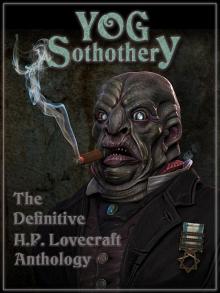 Yog Sothothery - The Definitive H.P. Lovecraft Anthology
Yog Sothothery - The Definitive H.P. Lovecraft Anthology The Complete H.P. Lovecraft Collection (Xist Classics)
The Complete H.P. Lovecraft Collection (Xist Classics)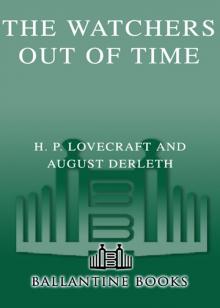 The Watchers Out of Time
The Watchers Out of Time Eldritch Tales
Eldritch Tales The Other Gods And More Unearthly Tales
The Other Gods And More Unearthly Tales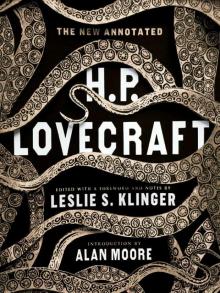 The New Annotated H. P. Lovecraft
The New Annotated H. P. Lovecraft At the mountains of madness
At the mountains of madness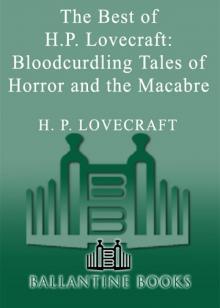 Bloodcurdling Tales of Horror and the Macabre
Bloodcurdling Tales of Horror and the Macabre Fossil Lake II: The Refossiling
Fossil Lake II: The Refossiling Shadows of Carcosa: Tales of Cosmic Horror by Lovecraft, Chambers, Machen, Poe, and Other Masters of the Weird
Shadows of Carcosa: Tales of Cosmic Horror by Lovecraft, Chambers, Machen, Poe, and Other Masters of the Weird H. P. Lovecraft
H. P. Lovecraft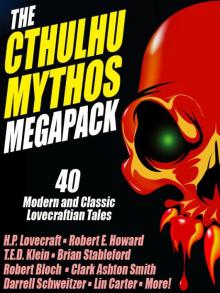 The Cthulhu Mythos Megapack
The Cthulhu Mythos Megapack The Complete H. P. Lovecraft Reader (2nd Edition)
The Complete H. P. Lovecraft Reader (2nd Edition) The Complete Fiction
The Complete Fiction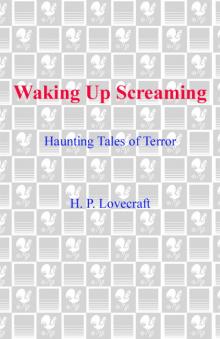 Waking Up Screaming
Waking Up Screaming Transition of H. P. Lovecraft
Transition of H. P. Lovecraft![[1935] The Shadow Out of Time Read online](http://i1.bookreadfree.com/i2/04/12/1935_the_shadow_out_of_time_preview.jpg) [1935] The Shadow Out of Time
[1935] The Shadow Out of Time The Horror Megapack
The Horror Megapack